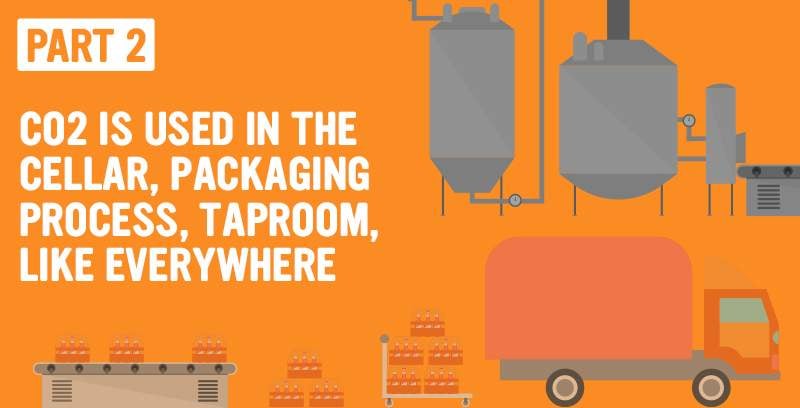
CO2 is both a processing aid and ingredient in craft beer. It is bought in liquid form and mostly heated back into a gas onsite for usage. Applications abound. CO2 can used to move beer between tanks, or it can be used to carbonate the final product. Like a fifth ingredient, CO2 is used everywhere throughout the cellar, packaging line and taproom. It’s used to purge tanks, purge oxygen before can seaming and push beer through lines to the tap. Kim Brisson-Lutz, VP of operations at Maui Brewing Co., lists the variety of applications for CO2 at Hawai’i’s biggest craft brewery.
“We use CO2 to maintain proper head pressure on tanks for process applications,” she explained. “We use it to move beer or product from one tank to another. We use it for carbonation of product. CO2 is used for scrubbing oxygen if it’s present prior to packaging. We use it in packaging of the beer in our can filler and keg racker operation and to pre-purge and pressurize equipment. Then there’s pre-purging brite tanks after cleaning and sanitization, and pouring draft beer at our restaurant and tasting room.”
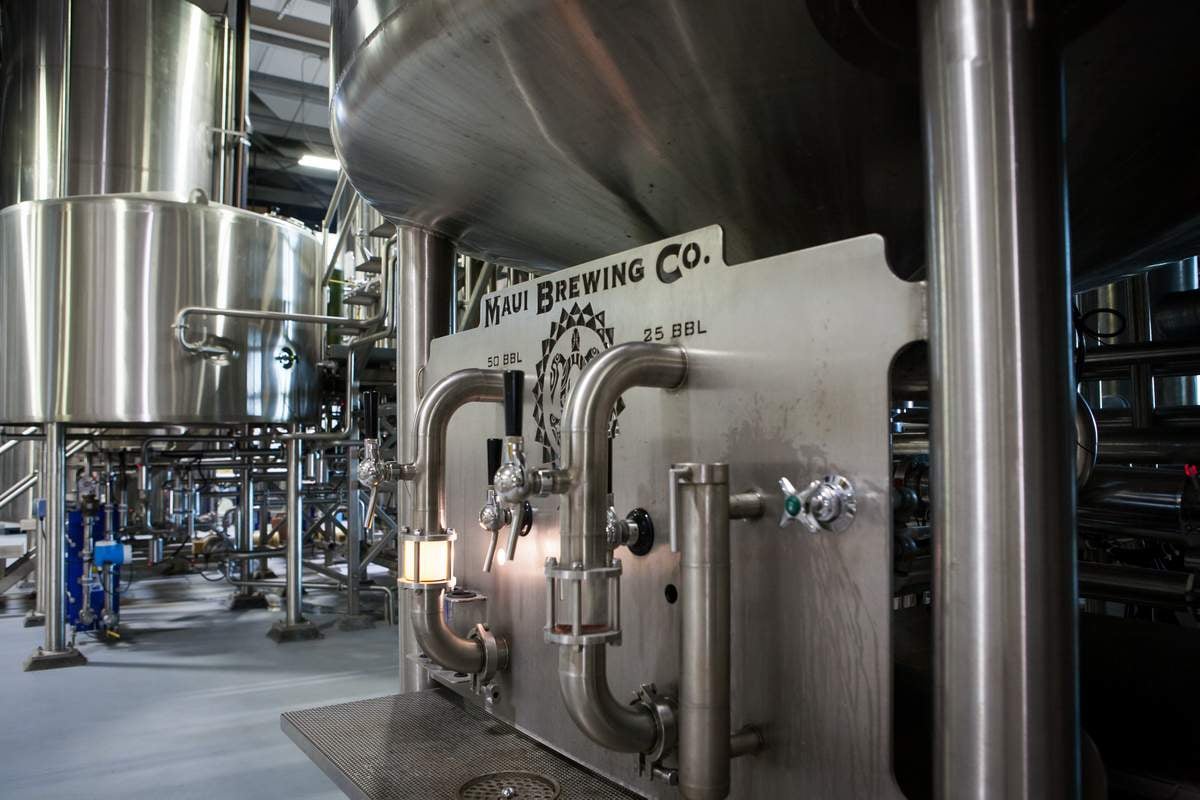
As detailed in part 1 of this series, regional CO2 shortages are becoming commonplace for a number of reasons (read all about why here). In part 2, we will discuss where CO2 is used in the brewing process, and as you can see already, it’s used everywhere.
CO2 is big in both cellar operations and packaging operations
Tank purging often consumes more CO2 than any other cellar operation. Brewers use CO2 to purge oxygen from the headspace in bright beer tanks to minimize dissolved oxygen levels in the final beer products. Brewers might use CO2 to purge oxygen before dry hopping. CO2 is also used to move beer through lines and pressurize fermentation tanks.
“We utilize CO2 throughout our entire process from brewing and packaging to serving,” said Michael Meade, brewing operations director at MadTree Brewing Co. in Cincinnati, Ohio. “We utilize CO2 to purge our tanks, cans and lines to mitigate oxygen contamination throughout our entire process. We also use a CO2 and nitrogen mix on the taproom side for our taps.”
CO2 is essential in the carbonation process, giving beer its fizz
There are a variety of ways to carbonate beer. Craft brewers might use a carbonation or diffusion stone, typically found on a brite beer fermentation tank (looks like this). On a carb stone, CO2 is forced through a hollow metal cylinder under pressure, emerging on the exterior in very small bubbles. The tiny bubbles create a large amount of surface area to help absorb CO2 rapidly into the beer.
CO2 Pro Tip: Ok, you probably know how much CO2 your craft brewery uses, but do you know how much CO2 other breweries use? If a neighbor is using less CO2 per bbl packaged, your processes may be the issue. There could be best practices to share. Compare usage!
A larger craft brewery might utilize a carbonization and/or blending system, installed in-line. This is the process of dissolving CO2 in a liquid while it’s being pumped from one vessel to another (say fermentation to brite tank). These systems are focused on high volumes, accurate CO2 saturation, quick process times and perhaps blending.
Carbonator units like this one from Pentair pass large amounts of beer rapidly through plates, allowing the beer to immediately receive full CO2 saturation at pretty much any flow rate. Units like this Beverage Blending and Carbonation System from Palmer Beverage Systems are big skids boasting high technologies (like its patented SubCarb carbonator) and options of blending and deaeration.
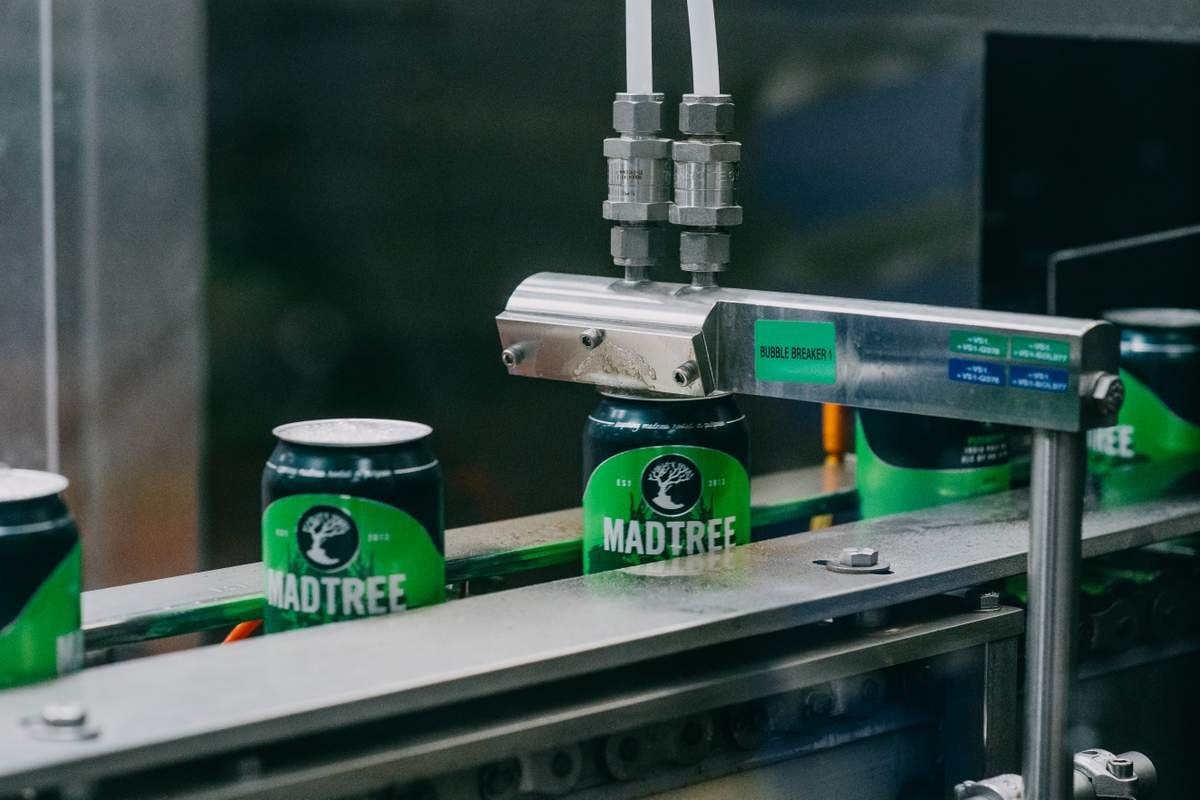
Photo credit: MadTree.
Beverage-grade carbon dioxide is used heavily in beer packaging.
Let’s start with canning, bottling and kegging. I highly suggest reading this “Guidelines for Economical Use of Carbon Dioxide in the Brewery” article by the Brewers Association:
“In packaging, carbon dioxide is typically used for bottle pre-evacuation and counter pressurization, can lid underletting, and keg purging and counter pressurization. Canning, bottling, and kegging are CO2 intensive processes; canning operations consume especially high amounts of CO2 compared to bottling and kegging.”
Canning, for instance, will use large amounts of CO2 prior to seaming the lid on. To prevent product oxidation, a huge volume of CO2 is used to purge oxygen from the headspace after filling the can and just before seaming. Enjoy this CO2 tunnel on a Wild Goose Filling canning line. I find it strangely calming:
Counterpressure is the use of carbon dioxide to overcome the tendency of beer to foam. It’s used in various brewing operations, including canning and bottling. Some systems, like this Twin Monkey Mancos CP canning machine, will use CO2 to main constant carbon dioxide gas pressure as the can or bottle is filled. Dig it in action:
CO2 is the primary gas used for the majority of draft beer systems
To get beer flowing smoothly through those beer taps, draft systems use pressurized CO2 (and maybe a nitro mix for longer pushes) to push beer out of the keg, into the beer line, up to the tap and into a glass. When pouring that next glass of beer, think about how much CO2 it really took to produce that pint.
How is this CO2 acquired? Where is it stored?
That all depends on the size of the brewery and its operations.
“There’s probably a fair amount of really small breweries out there basically purchasing what I’ll call a spot market,” explained Chuck Skypeck, technical brewing projects director at the Brewers Association. “They might be buying 50-lb cylinders when they need them, you know, without a contract. Once you get a little larger, you’re probably in a situation where you’re using a dewar or two. I think with most contracts, you’re going to find that those dewars are leased, not purchased, which is a fairly typical contract, if you’re using the provider’s tankage equipment. And then, obviously larger breweries will get up into possibly owning their own tankage and having different arrangements for their contract. You’ll find a lot of variation in the industry.”
Where tanks are placed depends on the brewery.
“We have our CO2 bulk tank setup just outside of our production building with an easy access point for large-scale refill,” said Meade. “It is set up in an area that has limited access to the public but a drive lane next to it so any refill would be uninterrupted by servicing it. We have a 30-ton tank of CO2, and our monthly volume is approximately 3.5 tons a month.”
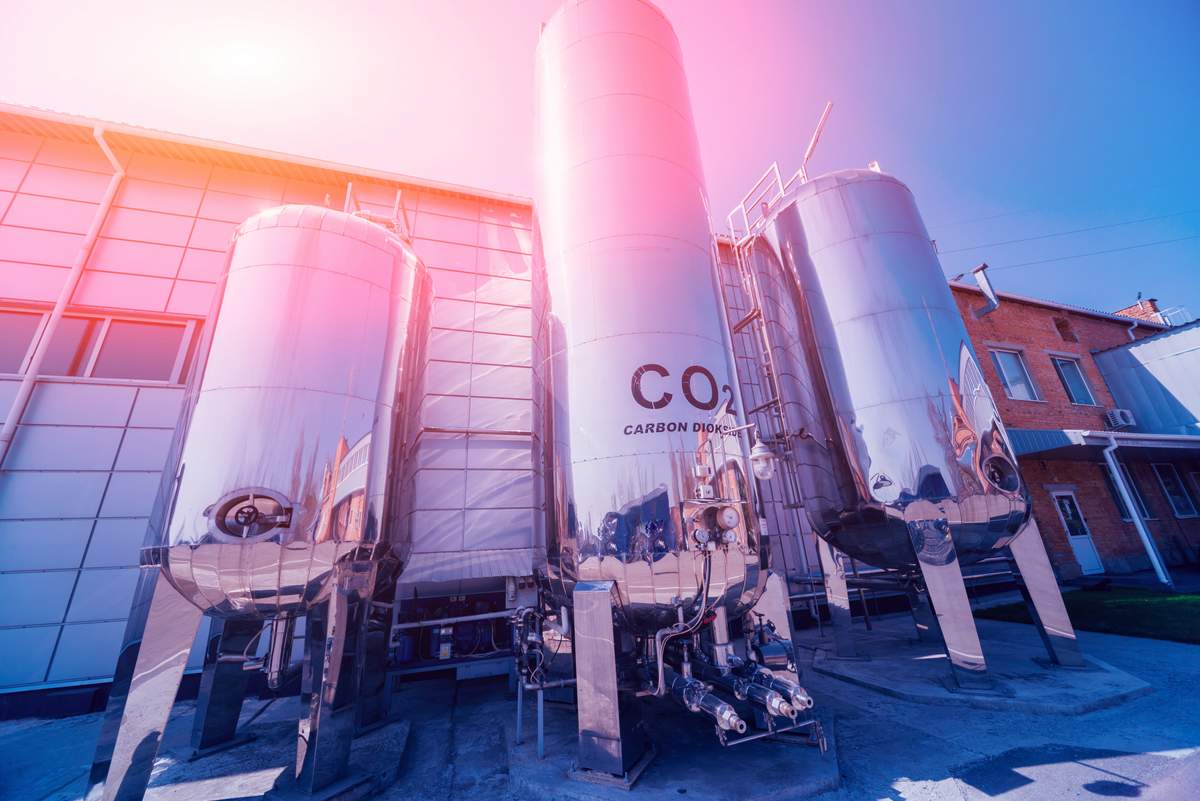
“Most breweries have utility pads or areas where they install equipment like the boiler, air compressors and CO2 tanks,” noted Brisson-Lutz. “Depending on the layout or size of facility, CO2 tanks can be stored indoors or outdoors. We store our CO2 tank outside [the brewery is based in Hawai’i] and in a location that can be easily filled by our supplier but also next to our CO2 recovery system.”
AirGas Oahu is Maui Brewing’s CO2 supplier. Typically, brewers will have multiple gas suppliers to choose from, but being in Hawai’i limits the CO2 supply chain even more. This is why Maui Brewing uses a CO2 recovery system and alternative gases in certain applications (more on that in parts 4 and 5 of The CO2 Shortage). Maui had a production volume of 65,000 bbls in 2021, and the company has grown every year except for 2020, so it’s in constant need of more CO2 or an alternative.
“Producing on an island, our CO2 supply is always limited,” said Brisson-Lutz. “So, we invested and continue to invest in a system to help offset the dependence we have on our suppliers. We have a CO2 recovery system, and we will be installing new technology called AirCapture to also produce CO2 for our facility.”
We’ll discuss CO2 recovery systems in episode 4 of The CO2 Shortage, but if you’re looking to learn how much CO2 you could recapture at your brewery, continue down to The Last Word sidebar below. In the third installment of the CO2 Shortage, I’ll get into best practices for using CO2 in various applications around the brewery, as well as tips on contracts and supply agreements. Tune in tomorrow!
Click here to see other CO2 Shortage articles.
The Last Word: How much could a craft brewery save by recycling its CO2?
In response to the global shortage of CO2 affecting the beverage and food processing industries, Massachusetts’ Night Shift Brewing announced it’s mostly switching to contract brewing. That’s one solution, but there are others.
In fact, there are actually ways to captures carbon dioxide in a brewery with something like a CO2 recovery system. I’ll be up front: This type of equipment is not cheap. In this edition of Unfiltered, craft brewers cited that these recovery systems can easily cost $70,000 to $120,000. That’s a lot of moolah, but the CO2 shortage is making these system more attractive. How?
Start by finding out how much money and CO2 you could be saving. FuelCell Energy Inc. — a global leader in manufacturing stationary fuel cell energy platforms for decarbonizing power — recently announced a new Carbon Savings Calculator for companies looking to gain greater insight into how the carbon dioxide produced by their operation across Scope 1 and Scope 2 emissions can be recycled and reused in their business. This approach provides an alternative to purchasing CO2, oftentimes from much higher polluting sources such as ethanol facilities, and can help avoid the business risk of rapidly rising CO2 prices and scarcity of supply.
While FuelCell Energy’s scalable carbon capture solutions are pretty large and top of the line, that CO2 calculator can be used by anyone. Just make sure you have some info like your electric utility rate and how much you currently pay for CO2. Learn more about FuelCell Energy alternatives over here.

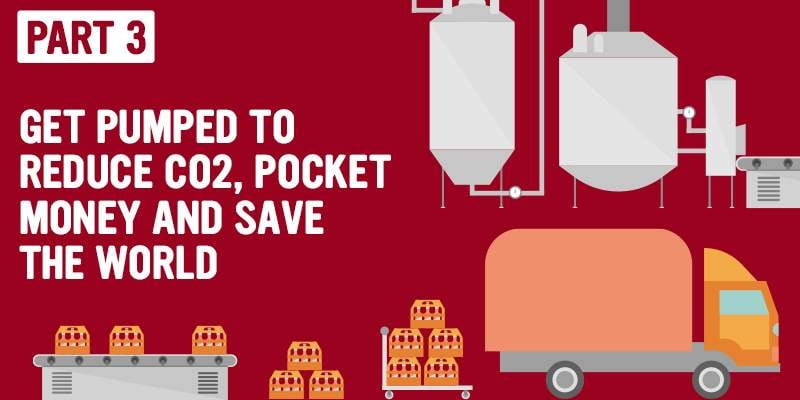
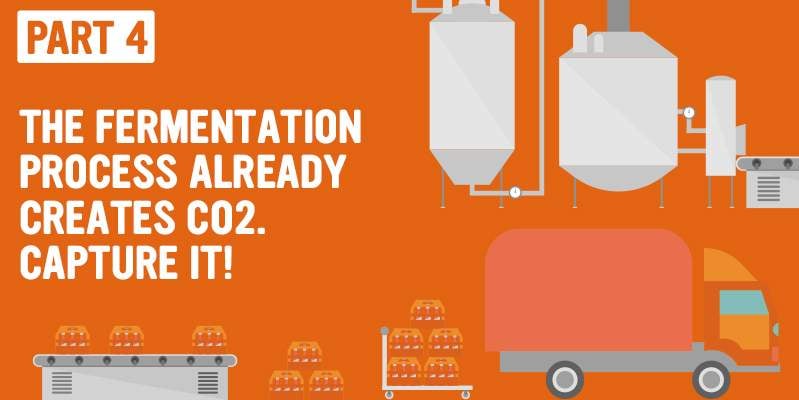
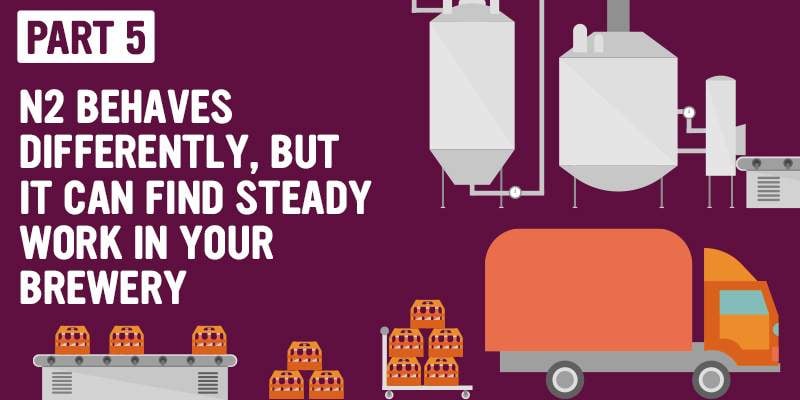
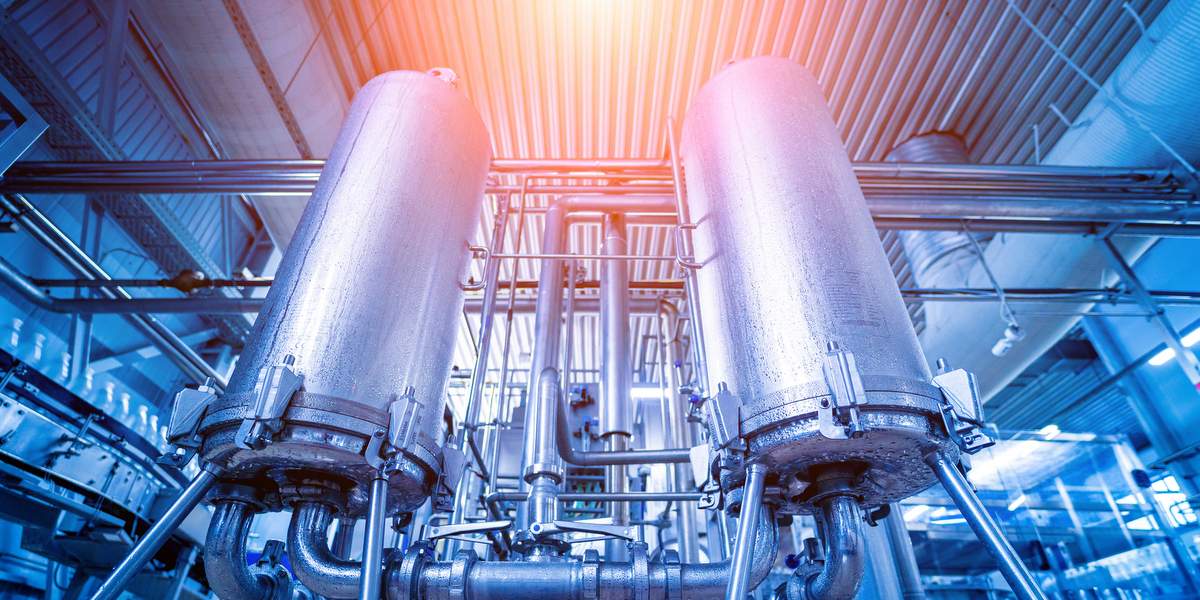
Leave a Reply
You must be logged in to post a comment.